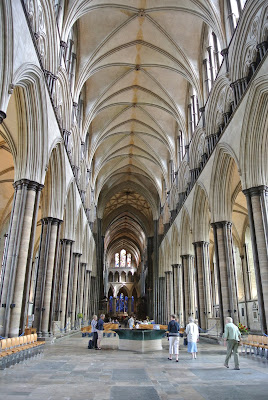Day 16, Sunday 26 August
Grabbed the Oyster cards and headed into the underground to the Tower of London. Getting there was easy and our London Pass had us inside the Tower very quickly.
The Tower of London
We decided to start with a walk around the walls which also took us through a lot of the palaces, living areas and the prison towers. The ‘Tower’ is a collection of buildings that have evolved since William the Conqueror first built the White Tower and the walls around it. It has grown into a collection of palaces, houses, prisons and other buildings. wandering through these and learning some of the history was fun. It was not as much fun for a whole stream of prisoners who have left their mark on the place.
There is the usual number of stories and plots and it is hard at times to accept that some of it is true. Those that were executed at the Tower were from the Royal's and executed there really to save them the indignity of a public execution. It did continue to be place to execute people until the end of World War II so they have been doing it there of a long time.
 |
| The Tower area is a collection of buildings including houses, palaces and administration buildings as well as prisons |
 |
| Tower Bridge from the Tower walls |
 |
| The Shard and other modern office buildings from the Tower. |
 |
| The White Tower is the oldest building at the Tower of London. |
 |
| The White Tower has been used as an armory for hundreds of years and holds a collection of weaponry. |
 |
| The White Tower also displays armour used by the Kings of England. |
 |
| Anne Boleyn lived in the Queens houses at the Tower before her execution on 19 May 1536. |
Then it was time to go through the strong rooms containing the Crown Jewels. To say they are magnificent is to put it lightly. The poms have certainly crawled over a few dead bodies to put this collection together! There is a whole row of crowns and royal implements to signify the power of the British monarchy. The amount of precious stones involved is amazing with the royal crown alone containing a mere 2818 diamonds and 297 pearls. There are another three crowns with similar numbers including the Queen Mum's crown that also contains the Koh-i-Noor diamond that is 105 carats (some would say the diamond was stolen from India). The Cullinan Diamond is in the Sceptre and is a massive 530 carats and the second Cullinan Diamond is in the Imperial State Crown and is 317 carats.
You don't get the opportunity to see this sort of wealth very often and it was stunning display when all of the crowns were mixed with solid gold table settings and all sorts of extravagant pieces made of solid gold. You are basically walking through a big bank vault to view this stuff and the security behind it must be enormous.
 |
| This is the building in which the Crown Jewels are stored. |
The Ravens
The ravens are one of the Towers most a famous sights. Legend has it that Charles 11 was told that if one of the ravens left the Tower, the kingdom and the fortress would fall. Toe sure that this calamity did not occur, the Ravenmaster clipped their wings preventing them flying off and bringing down the kingdom.
The Royal Beasts
For over 600 years, exotic animals were held captive at the Tower. Wild beasts were seen as a sign of power and prestige, much like we might covet a fast car or label clothes, kings throughout the history of the Tower collected creatures to create a majestic royal menagerie. From lions and tigers, eagles and owls, to elephants, kangaroos and even a polar bear. The bear was kept tied too rope, which allowed it to swim in the Thames, but not escape. Snakes were kept in ovens to keep them warm. And monkeys roamed the grounds during the day, but were put to bed (literally) at night.
The wobbly bridge
Originally opened in June 2000 then closed almost immediately due to structural problems, London's modern Millennium Bridge is now a favorite with locals and tourists alike.
Unfortunately, during the first two days that the structure was open, the thousands that crossed it noticed that the Millennium Bridge seemed to wobble. It was quickly nicknamed ‘The Wobbly Bridge’ or ‘The Wibbly-Wobbly’ and was immediately closed for modifications, just three days after it opened.
Modifications succeeded in entirely eliminating the problem, but those necessary modifications caused the bridge to remain closed until February 2002. It cost an additional £5m to complete the changes, but no significant vibrations have been felt since that time.
 |
| The Millenium Bridge |
Big Ben
Got the best view yet of Big Ben and the Houses of Parliament from the Wibbly-Wobbly Bridge. I had always thought Big Ben referred to the clock and the statue but not true. Your fast fact for the day - The Clock Tower of the Palace of Westminster – is officially named Saint Stephen's Tower – but it is commonly known as the Big Ben. There are five clock bells housed inside St Stephen’s Tower. The clock inside the tower was the world's largest when it was installed in the middle of the 19th century. The name Big Ben actually refers to the clock's hour bell, the largest of the clock's five bells. The other four are used as quarter hour bells.




















































